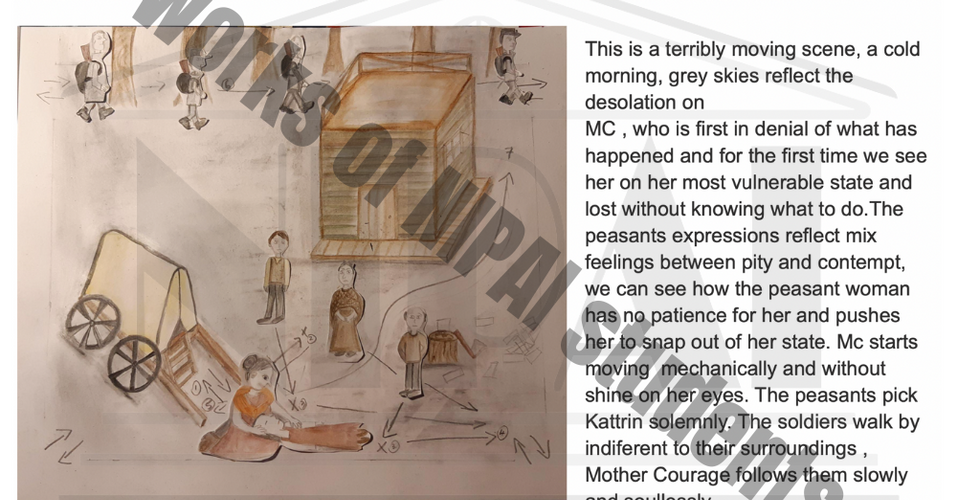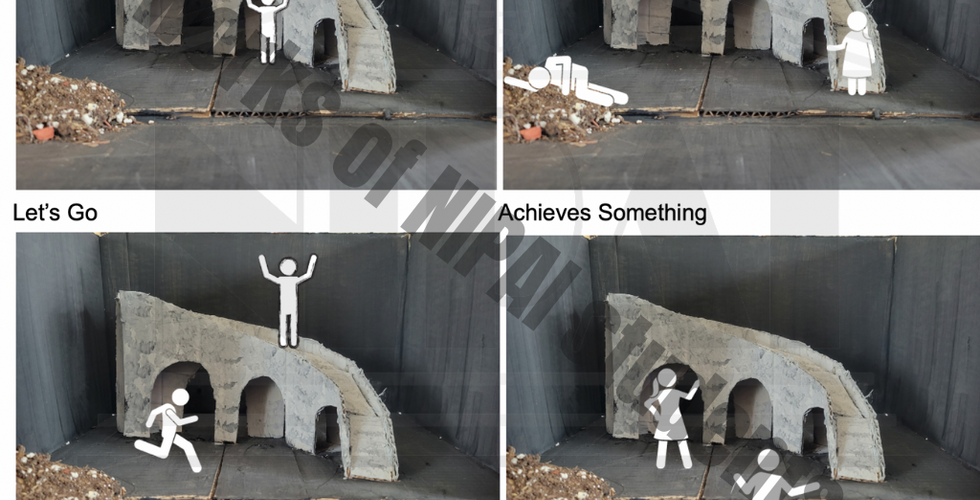Definition of Blocking in Theatre. Examples of Blocking
- NIPAI
- May 8, 2024
- 4 min read
Updated: Jun 3, 2024
Blocking in theatre is an essential component of staging that shapes the visual presentation and orchestrates the narrative and actors’ engagement with the audience. It involves more than merely placing actors on stage; it encompasses a sophisticated understanding of movement, timing, and spatial dynamics. This post explores the art of blocking, providing practical guidance for directors and actors.
What Does Blocking Entail in Theatre?
In theatre, the concept of blocking refers to the deliberate positioning and choreography of actors on stage. This critical component of theatrical production unfolds during rehearsals under the thoughtful guidance of both the director and the actors. While the director sets the artistic direction for the scene, actors contribute by navigating the stage in a manner that feels instinctive and authentic. Blocking involves several key elements including the precise locations where actors stand, known as stage positions, as well as their movements, orientations, and interactions.
Why is blocking vital in theatre productions?
Blocking serves as the roadmap for performers, delineating where they should position themselves and how they should move during a scene. This direction is not only crucial for maintaining organization on stage but also plays a pivotal role in conveying the underlying messages and the storyline effectively.
What does blocking entail during a scene?
In the context of theatre blocking involves strategizing the placements and movements of actors. This is a critical aspect during rehearsals, ensuring that the spatial arrangement complements the narrative.
Understanding Stage Positions in Theatre
In theatre, the definition of blocking is not only about whether an actor stands or sits, or their orientation towards the audience—it also heavily focuses on their specific placement on stage. To effectively convey an actor’s position during a performance, it's helpful to visualize the stage as divided into a nine-square grid when looking down from above. The lower part of this grid is closest to the audience, marking the front of the stage, while the upper part denotes the rear of the stage. Describing an actor’s position within these nine distinct sections can effectively communicate where they are during a performance.

Examples of Blocking
Dialogue Scene: Consider a theatrical scene where two actors engage in dialogue while seated on a couch. Here, both characters are seated facing one another, yet slightly angled towards the audience for better visibility. The couch is positioned in the lower left area of the stage, enhancing the visual dynamics of the scene.
The Circle: In a scene that features a family argument, positioning the actors in a circle visually encapsulates the tension and confrontation among the characters. Each actor faces inward, underscoring their emotional isolation despite being physically close.
Diagonal Lines: In a romantic scene, placing the two lovers at opposite ends of a diagonal across the stage visually represents both their emotional distance at the beginning of the scene and their potential reunion. As the scene progresses, their movements along the diagonal toward each other symbolize the closing of their emotional gap.
Levels for Power Dynamics: In a scene depicting a power struggle, having the character in power stand on an elevated platform while others remain on the ground visually amplifies the power dynamics. As the power shifts, the characters might change levels, effectively using the stage's vertical space to symbolize changes in status.
Dynamics of Movement and Influence on Stage
In theatrical performances, the way an actor moves across the stage can significantly impact the portrayal of power or vulnerability. Movements towards the audience are generally perceived as more assertive and commanding, indicating strength. In contrast, movements that pull away from the audience tend to suggest vulnerability or retreat, signaling a weaker stance. Additionally, moving horizontally towards the stage's center usually denotes an increase in power, whereas moving away from the center can appear less assertive.
Actors leverage these dynamics to underscore critical moments or pivotal developments in the plot. This understanding allows them to emphasize a character's strength or highlight moments of weakness without relying on words. The power of such movements can be so pronounced that actors are capable of conveying the essence of a story solely through their physical expressions.
To systematically depict these dynamics, movements can be categorized by their perceived strength or weakness. In a visual representation, movements with greater impact might be indicated with green arrows, while less powerful ones could be marked with red arrows. Neutral movements might be denoted with black arrows. Numerical values can further illustrate the intensity of these movements, with higher positive values indicating stronger actions and negative values reflecting weaker ones.

Practical Tips for Effective Blocking
Develop a clear understanding of the narrative arc and the emotional journeys of the characters. This vision will guide the blocking to ensure that movements enhance rather than detract from the story.
Be creative in using space to reflect thematic elements. Directors should think beyond standard configurations to explore how spatial relationships can symbolize relationships, conflicts, or shifts in the storyline.
Ensure that blocking is natural and beneficial for the actors. Work together to find movements that are authentic and contribute to character development.
Keep the stage composition dynamic yet balanced. Employing asymmetry can create tension and focus, a common technique in traditional staging.
Use different levels (sitting, standing, elevated platforms) to create visual interest and to signify power dynamics or emotional depth within scenes.
Smooth transitions between scenes are crucial for maintaining the flow of the performance. Transitions should be as meticulously planned as the scenes themselves.
Ensure all parts of the audience have a clear view of the main action, and use blocking to enhance their understanding of the narrative.
The initial attempt at blocking often needs refinement. Be prepared to experiment and make adjustments as rehearsals progress.
Blocking is an essential process that occurs early in rehearsals, involving the deliberate physical motions of actors. This technique not only aids in advancing the storyline but also enhances the subtext of the dialogue and strategically directs the audience's focus. It is a collaborative effort between the director and actors, requiring meticulous preparation and expertise, applicable across various settings from intimate studio theatre to grand auditorium stages.
Students at NIPAI (New International Performing Arts Institute) delve into the intricacies of choreography and blocking through our specialized short courses. Over the span of either a three-month distance program, our students explore these techniques in depth, achieving proficiency that is evident in their performances.
👉 More information about the online program "Choreography and Blocking in Performance" can be found here.
You can witness examples of blocking techniques applied by our students in pictures of completed assignments from the course.





























































